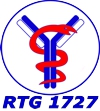Ass. MD TP8: Dissecting the Immunomodulatory role of 12/15-lipoxygenase in eosinophil biology
Resolution is an actively coordinated process that terminates inflammation leading to homeostasis and tissue repair. It is accomplished primarily through concerted actions of a growing class of molecules, collectively termed as “specialized pro-resolving mediators” (SPMs). In the course of resolution, SPMs act to limit PMNs recruitment and activate their clearance via induction of apoptosis and efferocytosis by alternatively polarized macrophages. Additionally, SPMs promote the return of non-apoptotic cells to lymphatics and initiate a tissue repair1. As a result, a failure to produce adequate amounts of SPMs, or interference in their bio-actions could lead to persistent inflammation manifesting as chronic inflammatory and/or autoimmune diseases. SPMs are produced in a cell from polyunsaturated fatty acids (PUFA) by successive enzymatic actions of one or a combination of lipoxygenase, cyclooxygenase, and cytochrome P450 monooxygenase enzymes. The enzyme 15-lipoxygenase-1 (15-LO-1) and its murine ortholog 12/15-lipoxygenase (12/15-LO) is an especially important orchestrator of resolution as it catalyzing the biosynthesis of the largest array of SPMs including lipoxins, D-series resolvins, maresins, and neuroprotectins2.
With previous in vivo studies examining the role of 12/15-LO in acute peritonitis and lung inflammation models3,4, the validity of the resolution concept to skin inflammation remained elusive due to a lack of reproducible animal models. To circumvent this difficulty and to study the impact of 12/15-LO activity on the course of skin inflammation, we took advantage of a preclinical antibody-transfer mouse model of an autoimmune skin disease, epidermolysis bullosa acquisita (EBA). EBA is a difficult-to-treat pemphigoid disease, characterized by production of autoantibodies (AAbs) to type VII collagen5. Precipitation of anti-Col VII AAbs in the skin and mucosa of EBA patients leads to fixation of complement, recruitment of leukocytes, and subsequent development of subepidermal blisters. In a similar manner, passive transfer of affinity purified anti-murine Col VII IgG into skin of susceptible mice leads to development of neutrophil-mediated tissue injury, clinically and histopathologically closely resembling the human disease6.
To address if 12/15-LO plays a role in pathogenesis of EBA, the course of antibody transfer EBA was studied in 12/15-LO deficient (Alox15-/-) and WT mice. In contrast to WT controls, following injection of AAbs to type VII collagen, Alox15-/- mice developed significantly aggravated and prolonged skin disease, suggesting that 12/15-LO counteracts and resolves autoantibody-induced skin inflammation. Moreover, 12/15-LO expression was markedly induced in lesional skin of WT mice by day 6 of the experiment. In line, starting from day 6, significantly elevated levels of 12/15-LO metabolized SPMs and their precursors, including 15-HETE, 14(S)-HDHA, 17(S)-HDHA, and protectin DX, were present in lesional skin of WT mice (data not shown). These combined findings suggest that the pro-resolving actions of 12/15-LO occur early on in the course of skin inflammation, concurring with an existing paradigm in the field stating that the “beginning programs the end”7. Accordingly, coordinated program of resolution is initiated shortly after an inflammatory response begins. Interestingly, 12/15-LO expression in EBA lesional skin, was restricted to a subpopulation of dermal infiltrating eosinophils. We aim investigate the contribution of eosinophils to the resolution phase of EBA.

- Projects
- Projects
- Associated projects
- MD projects
- Associated MD projects
- Concluded projects
- Concluded TP
- Concluded Ass.TP
- Concluded MD TP
- Concluded Ass. MD TP
- Ass. MD TP1 - Orphan receptor GPR15
- Ass. MD TP2 - GPR15 expression
- Ass. MD TP3 - HCA2 activation
- Ass. MD TP4 - Pro resolving enzymes in skin inflammation
- Ass. MD TP5 - Regulation of neutrophil function by endogenous 12/15-lipoxygenase
- Ass. MD TP6 - Dynamics in monocytes population in EBA
- Ass. MD TP7 - Immunometabolic activities of drugs
- Ass. MD TP8 - Dissecting the immunomodulatory role of 12/15-lipoxygenase in eosinophil biology
- Ass. MD TP9 - Immunometabolic activities of drugs used in pemphigoid diseases






